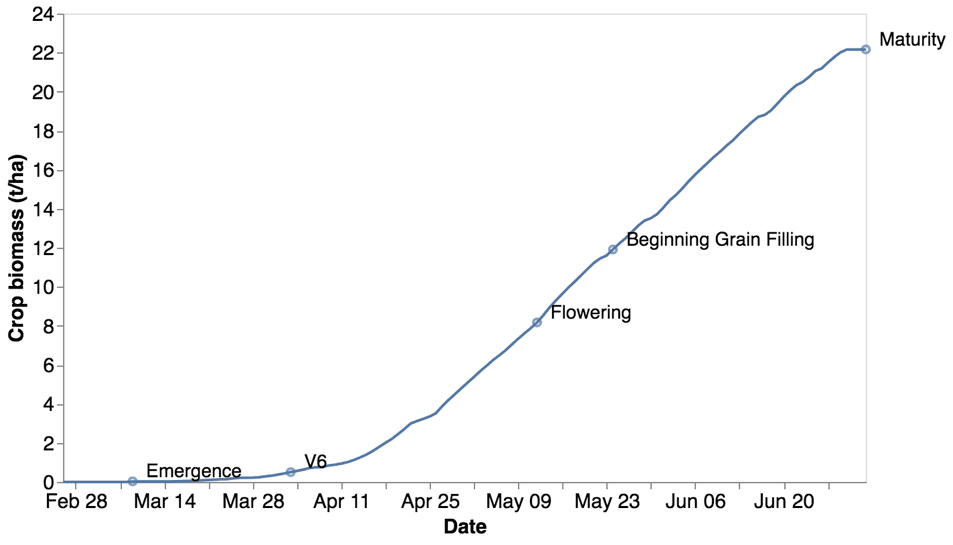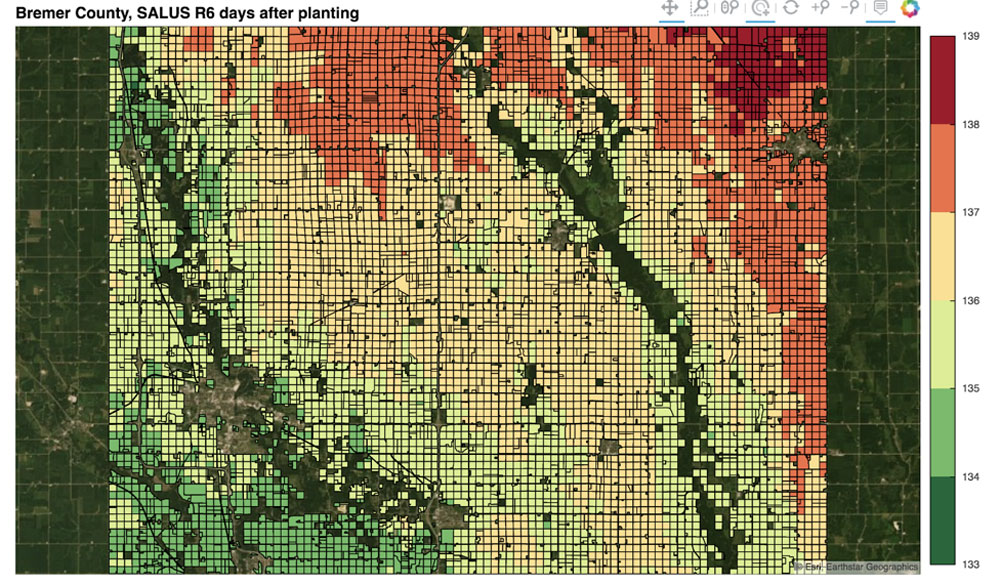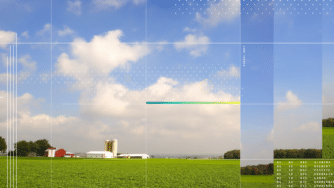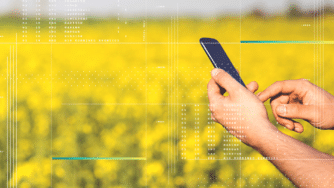By Kofikuma Dzotsi
Do you ever look at the final yield or productivity numbers for similar fields and wonder, “What makes one field perform better than the other?” It’s a natural question — it’s difficult to determine why one field yields 187 bushels per acre and a similar field in a different county yields 202. Of the many factors that contribute to determining the final yield, the timing of growth stages — i.e. phenology — experienced by the crop during the season is a key one. Understanding and correctly predicting crop phenology is an important prerequisite for accurate yield prediction.
An important thing to remember: Phenology is different from growth. Phenology is about measuring and understanding the phases of growth that a plant passes through as it advances towards maturity. Another term scientists have used to describe phenology is development. Hitting the phases at the right times, and for the right durations, creates optimal conditions for high yields as the plant grows.
At CIBO, we simulate the phenology and growth of many crops across the United States. By looking at how we track the phenology of corn users gain confidence in the science-based and decision-ready insights that CIBO delivers at scale.
The phenology of corn
Consider the phenology of corn. The seed contains sufficient energy and nutrient reserves to support germination, which generally occurs within one day in moist soils. The first stage of corn phenology starts when the seed emerges from the ground, exposing small, typically rounded, leaves. Emergence can take several days depending on the depth of planting, soil moisture, and soil temperature. Emergence marks the beginning of plant growth and self-dependency. The newly formed leaves intercept solar energy and consume atmospheric carbon to produce new biomass. Newly formed roots can absorb water and nutrients to support continued tissue growth.
After emergence, leaves appear, expand, and reach their maximum sizes, causing the plant canopy and biomass to grow exponentially. The end of the growth of each leaf is marked by the appearance of a “collar” at the base of the leaf, where it attaches to the stem. These “collars” are noticeable to an observer in an actively-growing corn field and have been used by farmers to compare growth patterns across fields and years, and to adjust their management decisions. For example, a corn plant showing six distinct leaf collars is at the phenology stage V6 (Fig 1). This leaf-collar phenology characterization is known as the V-stage system.
A critical milestone in the phenology of row crops like corn is flowering. This stage of development marks the transition from vegetative growth to reproductive growth, when kernels are formed and filled with carbon and nutrients. This is a critical period for the plant, as the corn plant directs scarce resources to the kernels to build them up. This redirection of resources to the kernels limits the availability of resources to the rest of the plant. Kernels are the only organs on the plant that can ensure perpetuation of the species. In corn, when kernels are filled to full capacity, a black layer appears at the base of the kernel, signaling the maturity stage (Fig 1).

Figure 1: Simulated phenological stages of corn grown in Florida with corresponding aboveground biomass growth
Why is phenology important?
Phenology is the part of the life cycle that measures the duration of growth. Accurate awareness of a plant’s current phenological stage guides decisions and can suggest actions that growers should take to promote growth. For example, if a corn plant is at the V6 stage, the application of nitrogen fertilizer to the soil can promote a higher rate of photosynthesis and biomass accumulation by the plant. (For example, notice in Fig 1 that biomass growth starts to accelerate around V6.) If the plant is experiencing drought around flowering, it is critical to take action to remove the stress and prevent significant yield loss.
Phenology is used by breeders to characterize differences among hybrids. In corn, the concept of relative maturity (RM) is a measure of the growth duration of a given hybrid. In the same environment, a Dekalb hybrid of RM 115 would typically take more time to reach maturity than a Dekalb hybrid RM 100. However, hybrids with the same RM rating of 100 can yield differently because of different growth characteristics not reflected in their phenologies.
Measuring phenology and a plant’s view of time
Phenology is typically measured in days. For example, a farmer might say that their 2019 corn field growing hybrid X in Iowa took approximately 60 days to reach flowering and 55 more days to reach maturity. However, the same hybrid grown in Georgia might take less time to mature. How is that possible? Did the crop adjust the duration of its growth cycle to the growing environment? Yes, but this raises another question: how are breeders able to standardize the phenological characteristics of corn hybrids to allow farmers to make informed decisions in different locations?
To explain the reason for the apparently shorter growth duration in Georgia compared to Iowa, it is useful to understand the plant’s view of time. The duration between phenological events is determined by the temperature of the growing environment,not necessarily calendar days. In other words, the plant advances through growth stages following its own internal biological clock operated by temperature. The higher the temperature, the faster the clock and the less time it takes the plant to reach the next stage. This observation has led scientists to using the now-widespread concept of “growing degree-days units,” or GDUs. CIBO uses a similar concept to predict how different temperature regimes impact crop phenology (Fig 2).

Figure 2: Spatial variability of number of days between planting and maturity of corn in Bremer county, Iowa, as simulated by CIBO’s crop model. The different colors illustrate major temperature gradients that influence phenological development.
How does CIBO predict phenology?
CIBO’s big data-powered simulation model can predict phenological events for several crops. Our in-season yield simulation tool directly reports phenology as projected maturity dates, which are calculated using plant characteristics like RM, environmental factors like weather and soil, and crop management factors like planting date– assisting users with the harvest, capacity, and marketing planning without the need for physically visiting each corner of the field. Other components of CIBO’s platform like Productivity, Valuation and Sustainability use phenology indirectly in their calculations, giving users confidence that CIBO’s insights are supported by a systems approach and account for the main drivers known to impact crop phenology and growth.
Registered CIBO users are able to run yield simulations on any farm, field or parcel in the US. Registration is free. See your land. See a simplified value. See CIBO.
About Kofikuma Dzotsi
Kofikuma Dzotsi is a Principal Crop Scientist at CIBO Technologies, a science-driven software startup. Prior to CIBO, he worked on developing and applying crop models in the public and private sectors. He holds an MS and Ph.D. in agricultural and biological engineering from the University of Florida.



